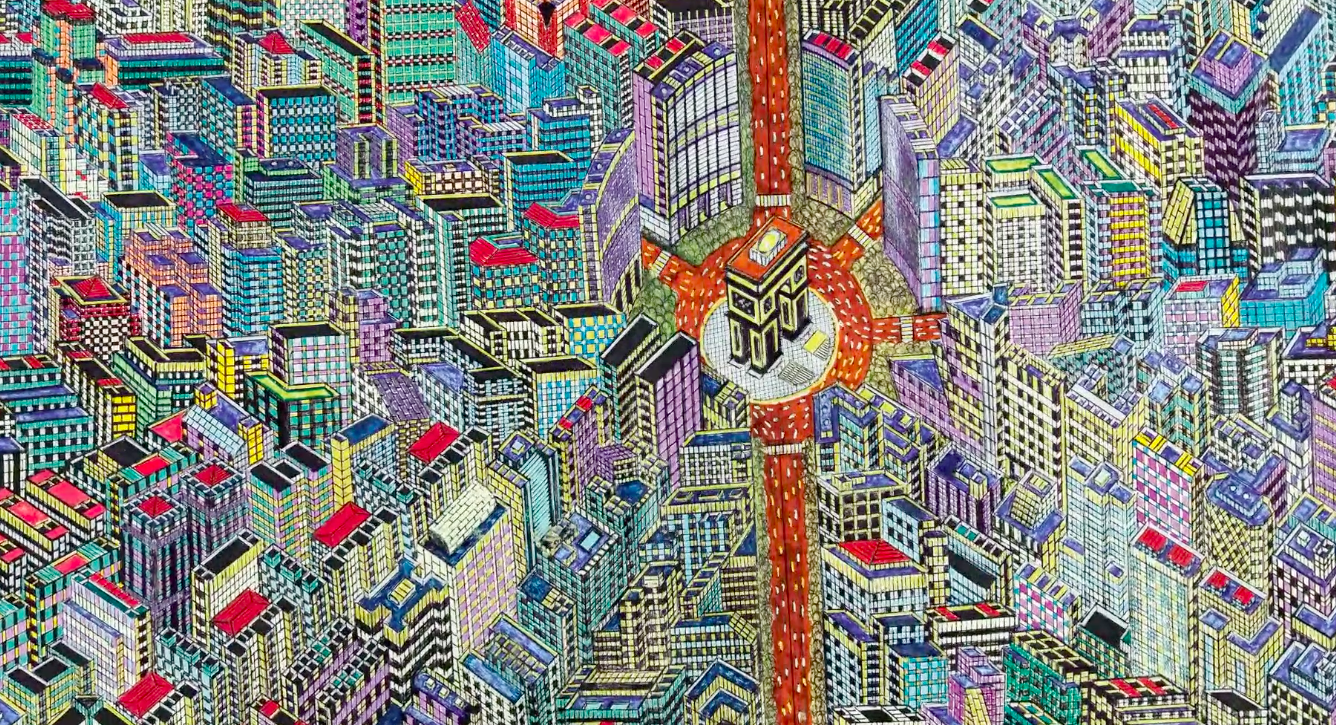
A new cultural landmark is emerging as the Fondation Cartier moves into the historic Palais-Royal district. Blending architectural reinvention with four decades of contemporary creation, the institution opens a vibrant new chapter for art in the city.
The Fondation Cartier pour l’art contemporain is turning a page and stepping into a bold future as it leaves boulevard Raspail for 2, Place du Palais-Royal. Moving into the former Louvre des antiquaires—a Haussmann-era building revived by Jean Nouvel, who also designed its previous home—the Fondation embraces a transformed vision of what an exhibition space can be. This major cultural move reshapes the role of art within the city and places Cartier back at the center of Parisian life.
In its new address, the Fondation Cartier invites visitors into an artistic experience deeply rooted in the capital’s historic core. The former shopping center once occupied by 240 antiques dealers has been reimagined entirely. Jean Nouvel has preserved the site’s historic soul while introducing a sense of openness, light, and movement. Gone are the shaded interiors and closed-off galleries; instead, the museum opens fully onto the city.
Before encountering a single artwork, visitors are struck by the architecture itself. Jean Nouvel has brought the building back to life through a spectacular interplay of transparency and natural light. Along 150 meters, expansive floor-to-ceiling windows breathe air and brightness into the space, revealing three vast glass canopies that illuminate the interior volumes. The tension between the history embedded in the walls and the modernity of the new materials creates a constant dialogue between heritage and innovation. Artworks unfold within these shifting lines of sight, offering perspectives that feel fresh and unexpected.
Inside, the innovation continues. Five mobile platforms—operated through an ingenious pulley system—reconfigure the exhibition halls at will. Ceiling heights reaching up to 36 feet (10.97 m) allow for dramatic scenographies in perpetual transformation. This freedom of movement turns the museum into a living organism, adjusting itself to each artistic narrative.
In spring 2026, the Fondation will deepen its mission through the Manufacture, a 300-square-meter space dedicated to creative craftsmanship. Children, families, and adults will explore artistic practice firsthand—an invitation to reconnect with tactile, real-world creativity beyond the digital sphere.
To inaugurate this encounter between history and modernity, the exhibition Exposition Générale presents a journey across four decades of contemporary art. Conceived by the design studio Formafantasma, the exhibition abandons linear storytelling in favor of a constellation of viewpoints, encouraging each visitor to shape their own path and meaning.
The experience extends into the surrounding neighborhood: the place du Palais-Royal and the galerie de Valois host artistic interventions that expand the exhibition into public space, anchoring the Fondation firmly within the Parisian landscape.
Meanwhile, the book Pop-Up, featuring colorful constructions by Dominique Ehrhard and texts by Aflow Lemasson, offers a poetic paper exploration of the Fondation’s new home.
Visible until August 23, 2026, Exposition Générale proposes an alternative map of contemporary art—alive, diverse, and open to the world, faithful to the Fondation Cartier’s spirit since 1984.


Comments